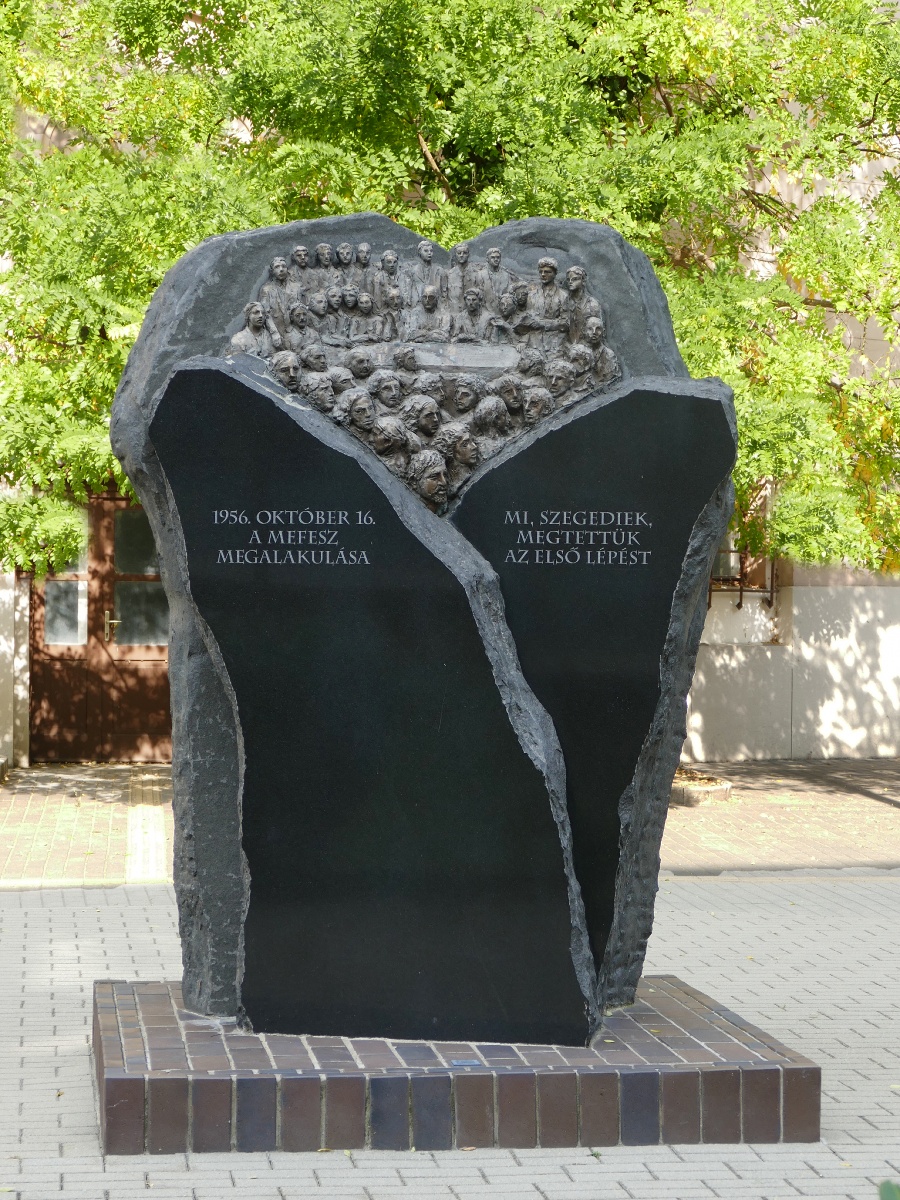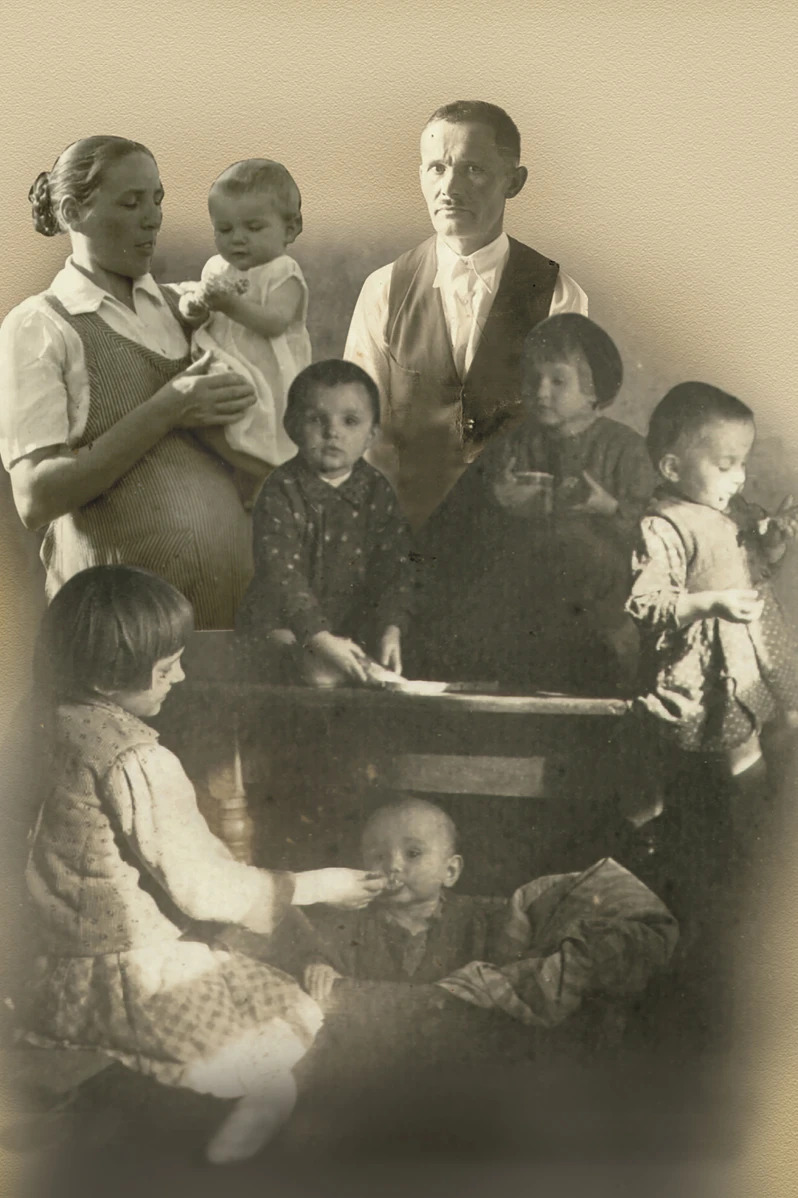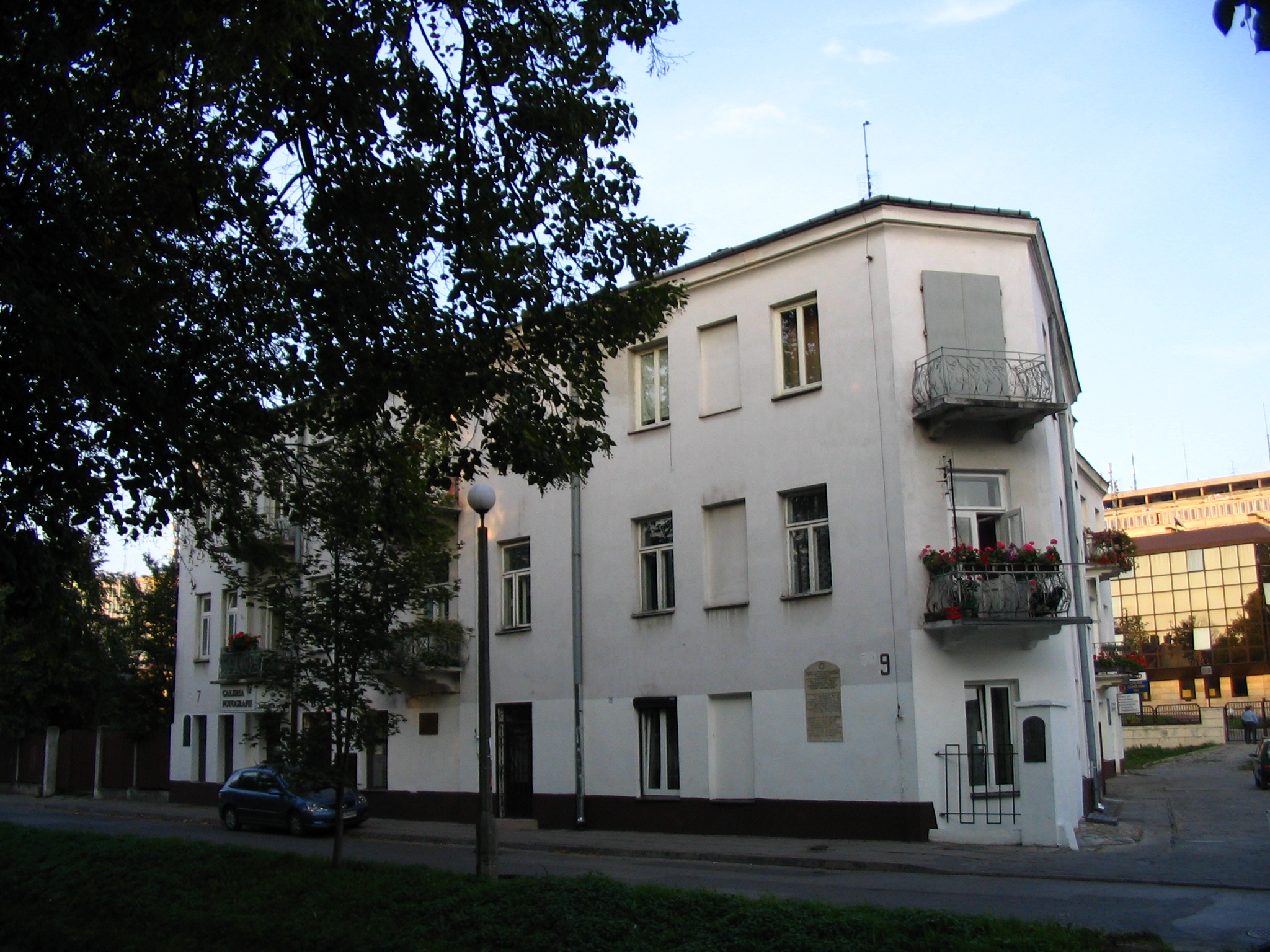Preludes – Association of Hungarian University and College Associations – Szeged, Auditorium Maximum
Fact of the Hungarian figure „Josef Bem Square – 1956″
Part of the „Dreaming about the democracy” topic
The Magyar Egyetemi és Főiskolai Egyesületek Szövetsége-Association of Hungarian University and College Associations (MEFESZ) was re-established on October 16, 1956, at a large assembly in the Auditorium Maximum of the Faculty of Arts at Szeged University. This student organization broke away from the Communist Youth Organization (DISZ), challenging the one-party state’s dominance over youth movements. In a charged atmosphere, students like Tamás Kiss and András Lejtényi proposed creating an independent organization to represent their interests, which led to the founding of MEFESZ, a key moment in the early stages of the 1956 revolution.
On October 20, the packed Auditorium Maximum hosted another critical meeting. The organizational statutes were adopted, and the students formulated demands that went beyond education reforms, addressing political issues like freedom of expression and democratization. This meeting was chaired by Professor József Perbíró, who later became president of Szeged’s Revolutionary National Committee. The event was recorded by Hungarian Radio, a sign of its growing importance. Figures like Rector Dezső Baróti and academician Gábor Fodor also addressed the crowd, adding intellectual weight to the movement.
Key student leaders from Szeged, including Kiss, Lejtényi, Imre Tóth, and Dezső Gönczöl, were instrumental in shaping the movement. The demands formulated at Szeged soon spread to other universities, including the Budapest University of Technology. A Szeged representative attended the pivotal meeting at the Budapest university, where additional demands, such as the withdrawal of Soviet troops and the reinstatement of Imre Nagy as prime minister, were added.
The revolutionary wave gained national momentum, and on October 23, students in Budapest demonstrated, echoing the MEFESZ demands. This demonstration, which began with the peaceful call for reform, escalated as crowds toppled the Stalin statue and armed conflict broke out after Hungarian Radio refused to broadcast the students’ demands. The role of Szeged, especially the events at the Auditorium Maximum, were key preludes to the nationwide revolution. The intellectual debates and organizational efforts that began there spread across Hungary, fueling the broader revolution. Szeged’s leaders and the demands forged in its meetings exemplified the spirit of dissent and democratic aspiration that ultimately led to the 1956 Hungarian Revolution.
Today, the Auditorium Maximum stands as a symbol of Hungary’s quest for freedom and sovereignty, marking its role as a birthplace of revolutionary ideals and student-led political change. Since 2000, the official celebration of the University of Szeged is the „Day of Student Self-Government and University Autonomy”, on 16 October, the anniversary of the first meeting that led to the establishment of the MEFESZ. On 14 October 2016, the General Assembly of the National Students Union of Hungary (HÖOK) elected Tamás Kiss, founding President of MEFESZ, as Honorary President.





